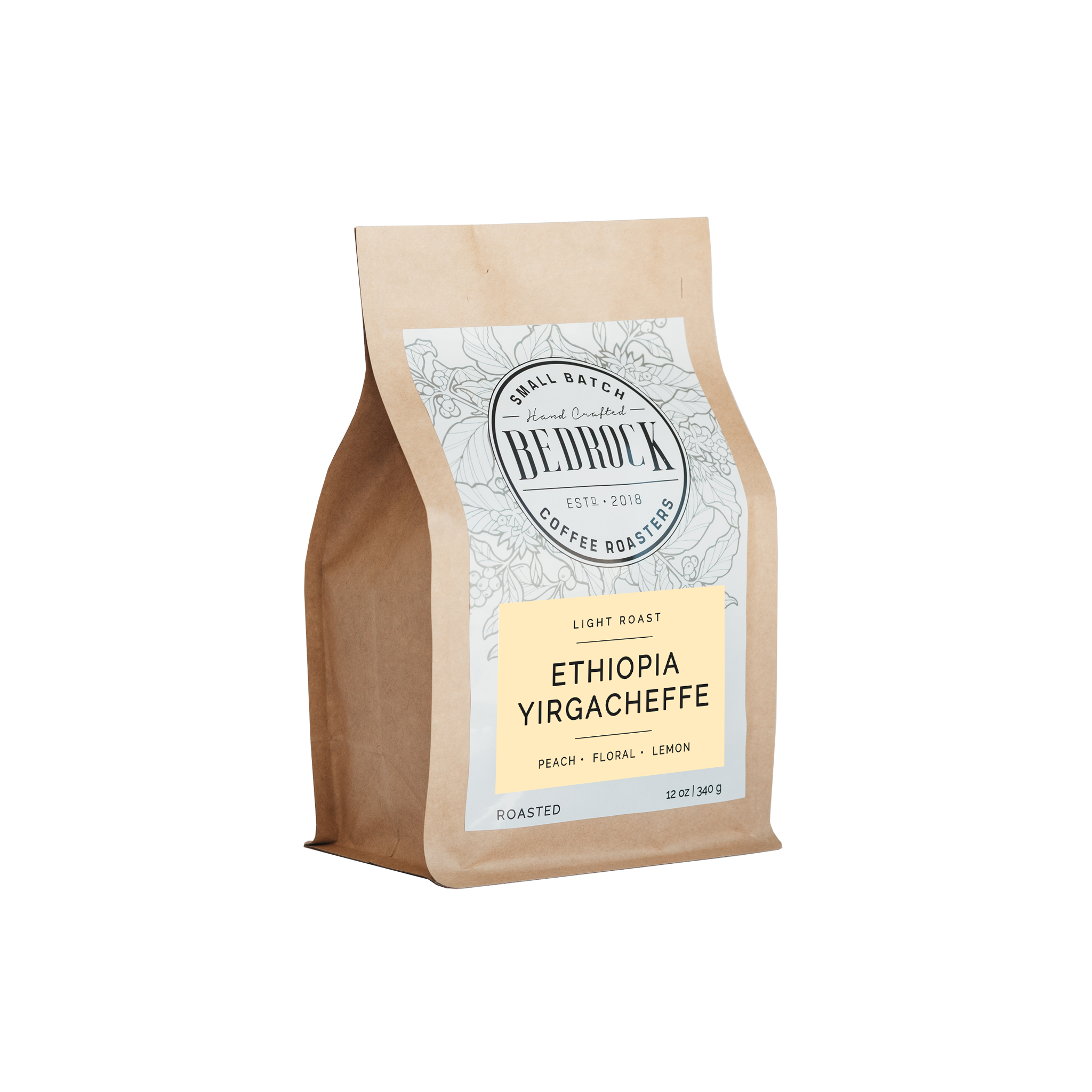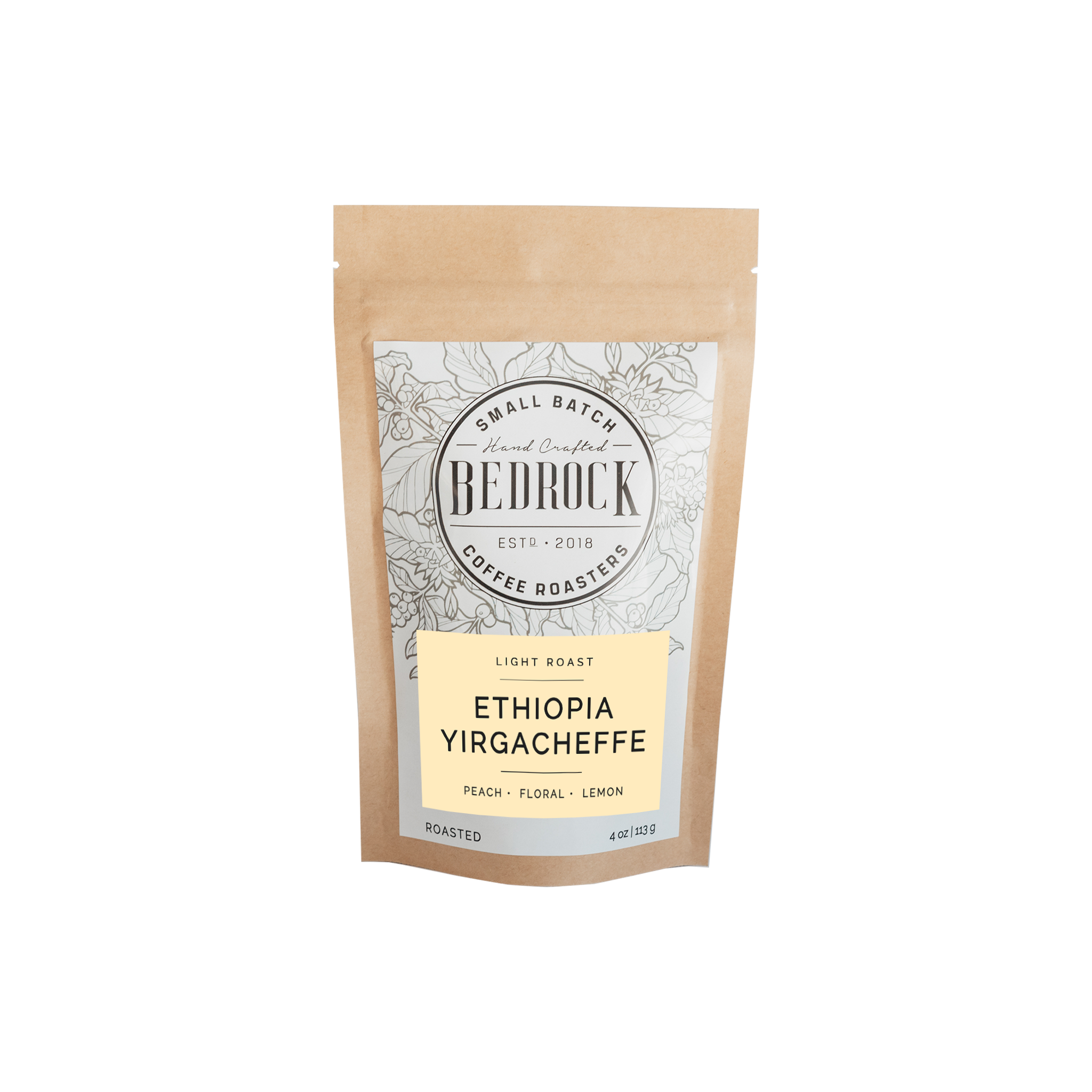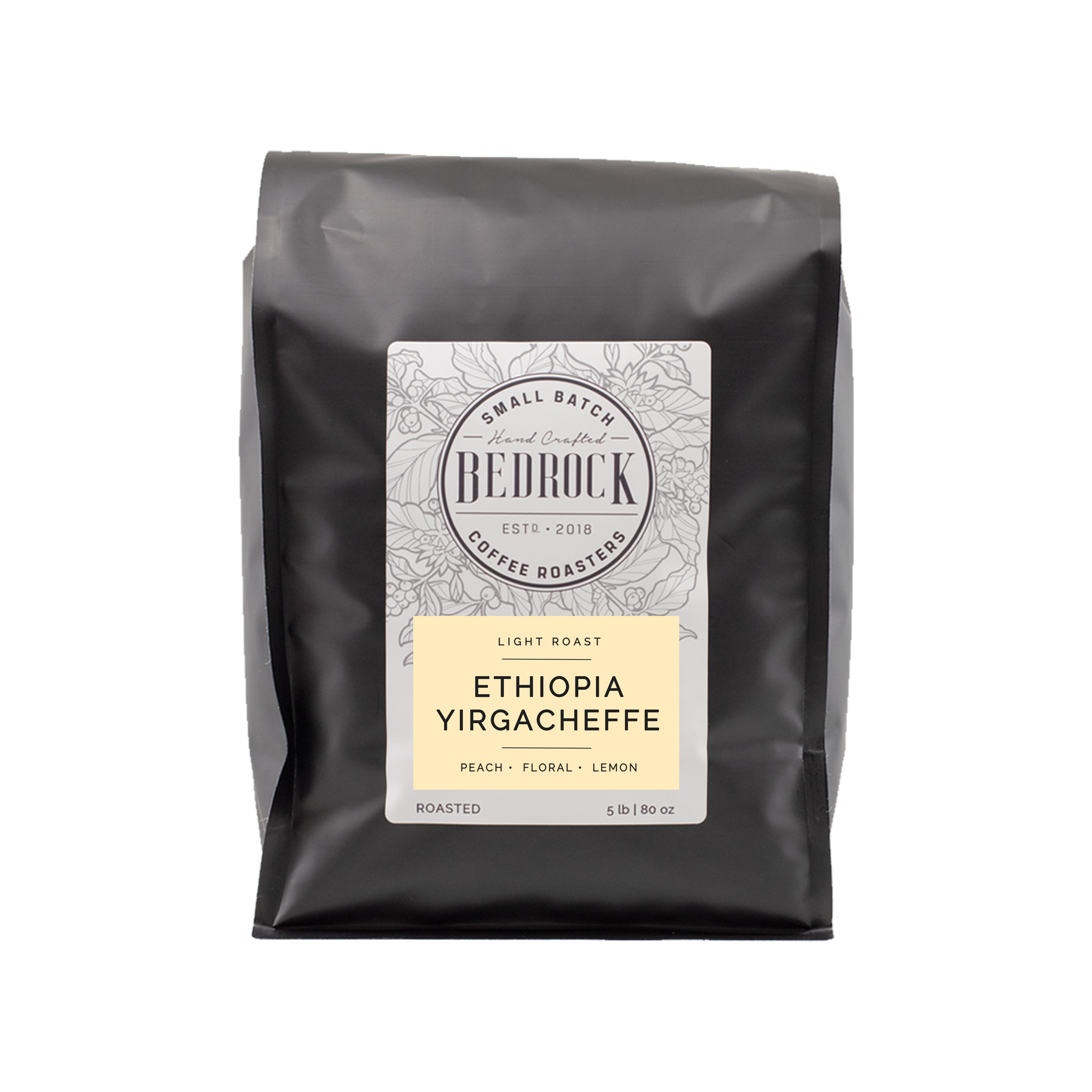Description
Some of the most unique coffee comes from the birthplace of coffee in Ethiopia. This floral and tropical heirloom variety comes from the Mrs. Tigest Wako farm in Idedo, Yirgacheffe.
| Tasting Notes | Peach, Floral, Lemon |
|---|---|
| Country of Origin | Ethiopia |
| Region | Yirgacheffe |
| Farm | Mrs. Tigest Wako |
| Altitude Grown | 1900-2400 MASL |
| Variety | Heirloom Ethiopian Varieties |
| Process | Natural |
Country: Ethiopia

Ethiopia is the largest producer of coffee in Africa and the fifth largest in the world. It is a country of incredible biodiversity, and there are over 6,000 known varieties of coffee grown in Ethiopia alone. Each region of Ethiopia has unique coffee varieties, as well as processing techniques and flavor profiles. Coffees are commonly named after the region they are grown in, like Yirgacheffe, Sidama, or Guji.
Coffee in Ethiopia is grown in a unique way, with much of it grown in a forested area known as the coffee garden. This is an area of land where farmers grow coffee trees as part of their natural environment, rather than in a monoculture environment as is typical in many other coffee-growing countries. The trees are often grown among other plants and trees, providing shade and biodiversity that benefits both the coffee trees and the environment.
The harvest season in Ethiopia is typically from October through January, with many smallholder farmers picking and processing their own coffee cherries. Once harvested, the coffee is typically processed using the natural or dry processing method, where the coffee cherry is left to dry on the bean, imparting a distinct fruitiness and complexity to the flavor profile. However, there are also many wet-processing stations in Ethiopia, where coffee cherries are depulped and the beans are washed and dried.
Ethiopian coffee has a complex and diverse flavor profile that is often described as floral, citrusy, and tea-like, with a bright acidity and a sweetness that can range from fruity to caramel-like. It is this diversity in flavor and profile that makes Ethiopian coffee so special, and why it is sought after by coffee roasters and enthusiasts all over the world.
Region: Yirgacheffe

Yirgacheffe has become famous for coffees that tastes like blueberries. This region is plentiful. The thick vegetation is a product of the warm tropical climate with moderate wet and dry seasons. Most coffee is shade-grown by small producers using organic practices. Coffees are cultivated from 1600 to 2400 masl in these highlands. The multitude of microregions creates complex profiles depending on the washing station a particular coffee is from.
Farm: Mrs. Tigest Wako

Mrs. Tigest Wako is a rare female landowner in Ethiopia’s Gedeo zone, home to the renowned Yirgacheffe coffee. Her 7.6-hectare farm in Idedo sits at an ideal elevation and produces exceptional lots from updated heirloom varieties like 74110 and 74112.
With deep roots in coffee and support from her husband—a local pastor and coffee supplier—Mrs. Wako manages the complexities of farming with resilience and purpose. Her dedication, tradition, and innovation shine through in every cup.
Variety: Heirloom Ethiopian Varieties

Although this offering is not traceable to a single variety, it is comprised of native heirloom varieties cultivated in Ethiopia
Process: Natural

Natural coffees are typically delivered on the same day they're harvested, then carefully sorted for ripeness and quality before being rinsed to remove dirt. After rinsing, the cherries are spread out on raised drying beds or tables, where they’re turned frequently to ensure even drying. The drying process usually takes between 8 and 25 days, depending on weather conditions.





